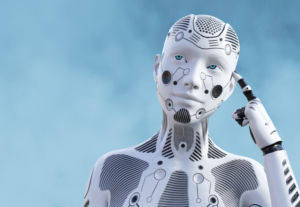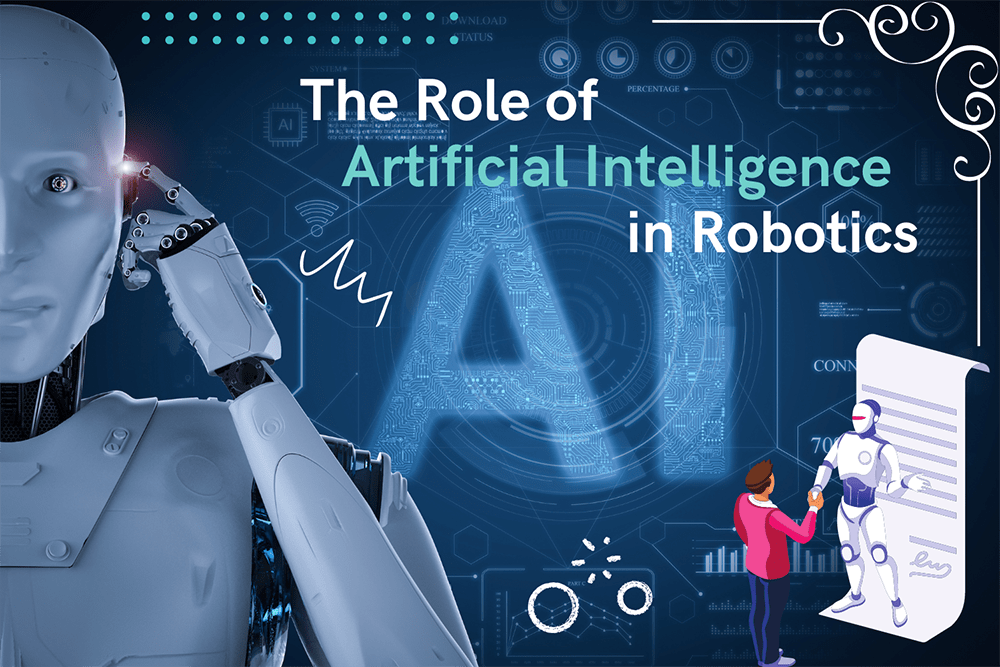Robotics is the study of the development and design of these mechanical people. And robotics is no longer limited to the mechanical and electrical domains.
With the assistance of computer science, robots are becoming ‘smarter’ and more efficient. As a result, Artificial Intelligence has played a significant role not only in boosting human comfort, but also in increasing industrial productivity, which encompasses both quantitative and qualitative production as well as cost-efficiency. This article provides a brief overview of the significance of Artificial Intelligence in the field of robotics.
What is AI?
Artificial intelligence (AI) is a computer programme that primarily focuses on the construction and analysis of algorithms, which implies that AI is a computer programme capable of producing a machine with its own intellect and behavior.
What is Robotics?
A robot is a machine that can sense and interact with its surroundings.

Artificial intelligence is important in the field of robotics since it aids in the development of intelligent robots by incorporating AI. The combination of AI and robotics is particularly strong since it aids in the automation of a variety of commercial activities. With its learning capabilities and versatility, AI has become a frequent and one of the most beneficial solutions in Robotics.
The following are some examples of where AI has been used in the field of robotics:
- Assemble: AI is beneficial in a variety of robotic assembly applications. AI combined with superior vision systems may aid in real-time correction, which is critical in the field of aerospace and other complicated production industries.
- Package: Robotic packaging employs many forms of AI applications to achieve reduced costs, quicker speeds, more precise packing, and other benefits. Furthermore, by continually refining robotic system motions, it can assist conserve them. This allows specialists to simply install and relocate robotic equipment.
- Customer Service: Most hotels and retail shops utilise robots in the customer service department. To engage with their clients and consumers in the most human-like manner, most robots employ Natural Language Processing and Artificial Intelligence.
These are just a few examples of how AI may be linked with robotics to improve its efficiency and utility.
AI technologies used in Robotics:
Computer Vision
Robots can see as well, thanks to one of the most prevalent Artificial Intelligence technologies known as Computer vision. Computer vision is essential in all areas, including health, entertainment, medical, military, and mining.
Computer Vision is a branch of Artificial Intelligence that assists in extracting meaningful information from photos, videos, and visual inputs and acting on it.
NLP:
NLP (Natural Language Processing) may be used to provide AI machines voice commands. It fosters an intense human-robot engagement. NLP is a subfield of AI that allows people and machines to communicate with one another. The NLP technology allows the robot to interpret and duplicate human language. Some robots are outfitted with NLP, making it impossible to distinguish between people and robots.
Similarly, in the health care business, Natural Language Processing-powered robots may assist clinicians with observing critical details and automatically filling up EHR. Aside from recognizing human language, it can also learn typical usage, such as learning an accent and predicting how humans speak.
Edge Computing:
In robots, edge computing is characterized as a service provider for robot integration, testing, design, and simulation. Edge computing in robotics improves data management, lowers connectivity costs, improves security procedures, and provides a more dependable and uninterrupted connection.
CEP (Complex Event Process):
Complex event processing (CEP) is a notion that helps us comprehend the simultaneous processing of several events. A Change of State is defined as an event, and one or more events combine to produce a Complex event. The phrase “complex event process” is most commonly used in areas such as healthcare, banking, security, marketing, and so on. It is largely employed in the detection of credit card fraud as well as in the stock marketing industry.
For example, the deployment of an airbag in a car is a complicated event that relies on real-time input from several sensors. This concept is applied in robotics, such as Event-Processing in Autonomous Robot Programming.
AI and Transfer Learning
This is a strategy for solving one problem with the aid of another problem that has already been solved. In the Transfer learning approach, information obtained from addressing one issue may be used to solve another. We can see how it works by using an example: the model used to identify a circle form can also be used to identify a square shape.
Transfer learning reuses a previously trained model on a similar issue, and just the last layer of the model is learned, which is less time consuming and less expensive. Transfer learning may be used in robotics to teach one machine with the assistance of other machines.
Affective Computing:
Affective computing is the study of designing systems that can recognize, understand, process, and imitate human emotions. It seeks to give robots with emotional intelligence with the hope of endowing robots with human-like capacities of observation, interpretation, and emotion display.
Mixed Reality:
Mixed reality is another upcoming technology. It is mostly used in demonstration programming (PbD). PbD develops an algorithm prototyping process by combining real and virtual things.

Researchers have long considered how to apply artificial intelligence to robotics, but have run against limits such as computer capacity, data constraints, and finance. Many of those constraints are no longer there, and as a result, we may be approaching a golden age of robotics. Robots are becoming more sensitive, collaborative, and integrated into other systems thanks to machine learning.
Similarly, several RPA suppliers are incorporating intelligent process automation into their bots to assist boost their utility. As a result, they are investigating AI technologies such as natural language processing (NLP) and computer vision to assist in making these bots more intelligent. Bots that use machine learning and react to new facts and data are more than simply bots; they are intelligent tools that can substantially affect and boost the activities accomplished.


